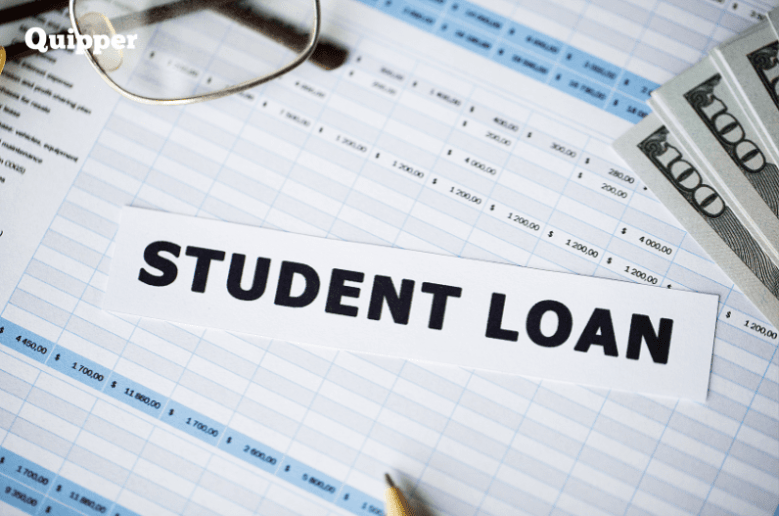
The weight of student loan debt can feel overwhelming, especially when unexpected life events or financial setbacks arise. Many borrowers find themselves grappling with the daunting question: “What if I can’t afford my student loan payment?” This isn’t uncommon, and fortunately, there are several options available to help navigate this challenging situation. This guide explores various strategies for managing student loan debt, from understanding your financial situation to seeking professional assistance and planning for long-term financial stability.
Facing financial hardship related to student loans can be stressful, but proactive steps can mitigate the negative consequences. We’ll delve into practical solutions, providing a clear roadmap to help you regain control of your finances and find a sustainable repayment plan. This includes examining different repayment options, exploring avenues for financial assistance, and building healthy financial habits to avoid future debt problems.
Understanding Your Financial Situation
Understanding your current financial standing is crucial when facing student loan payment difficulties. A clear picture of your income and expenses allows you to identify areas for potential savings and develop a realistic repayment plan. This involves creating a detailed budget and analyzing where your money is going.
Monthly Budget Breakdown
Creating a comprehensive monthly budget is the first step in understanding your financial health. This involves listing all sources of income and meticulously tracking every expense. The following table provides a sample budget; your specific numbers will vary.
| Item | Category | Amount | Notes |
|---|---|---|---|
| Salary/Wages | Income | $3000 | Net income after taxes and deductions. |
| Student Loan Payment | Debt Payments | $500 | Monthly payment on federal student loans. |
| Rent/Mortgage | Housing | $1000 | Monthly housing cost. |
| Utilities (Electricity, Water, Gas) | Housing | $200 | Combined monthly cost of utilities. |
| Groceries | Food | $300 | Weekly grocery shopping expenses. |
| Transportation (Car Payment, Gas, Public Transit) | Transportation | $300 | Monthly transportation costs. |
| Health Insurance | Healthcare | $150 | Monthly premium for health insurance. |
| Credit Card Payments | Debt Payments | $100 | Minimum payment on credit card debt. |
| Entertainment | Personal Expenses | $150 | Money spent on leisure activities. |
| Savings | Savings & Investments | $100 | Amount saved each month. |
Income Allocation Visualization
Imagine a pie chart. The entire circle represents your total monthly income ($3000 in this example). A significant portion, perhaps one-sixth (16.7%), would be dedicated to student loan payments ($500). Other large slices would represent housing (33.3%), transportation (10%), and groceries (10%). Smaller slices would represent the remaining expenses and savings. This visual representation clearly illustrates the substantial portion of income allocated to student loan payments compared to other essential expenses. This highlights the potential financial strain if payments are missed or become unaffordable.
Consequences of Missed Student Loan Payments
Missing student loan payments has serious repercussions. Your credit score will suffer significantly, making it harder to obtain loans, credit cards, or even rent an apartment in the future. Late payments remain on your credit report for seven years, negatively impacting your financial standing for an extended period. Furthermore, your loan servicer may initiate collection actions, such as wage garnishment or the seizure of assets, to recover the outstanding debt. These actions can create substantial financial hardship and long-term difficulties. In some cases, the government can also take legal action to collect the debt.
Exploring Options for Managing Debt

Facing difficulty in meeting your student loan payments can be stressful, but several options exist to help manage your debt and avoid default. Understanding these options and choosing the best fit for your individual financial circumstances is crucial. This section will explore some common strategies for managing your student loan debt.
Student Loan Repayment Plan Options
Choosing the right repayment plan can significantly impact your monthly payments and overall loan repayment cost. Several plans are available, each with its own set of terms and conditions. Carefully comparing these plans is essential before making a decision.
- Standard Repayment Plan: This is the default plan for most federal student loans. It typically involves fixed monthly payments over a 10-year period. The advantage is a relatively short repayment period, leading to less interest paid over the life of the loan. However, the monthly payments can be high, potentially causing financial strain for some borrowers.
- Graduated Repayment Plan: This plan starts with lower monthly payments that gradually increase over time. This can be helpful initially if you’re facing financial constraints, but the payments will become substantially larger later in the repayment period. The longer repayment period means more interest paid overall.
- Extended Repayment Plan: This plan allows for longer repayment periods, typically up to 25 years, resulting in lower monthly payments. The significant drawback is the substantially increased interest paid over the extended repayment term. This plan is generally only suitable if you anticipate a significant increase in income in the future.
Income-Driven Repayment Plans: Advantages and Disadvantages
Income-driven repayment (IDR) plans tie your monthly payments to your income and family size. These plans are designed to make student loan repayment more manageable, particularly during periods of lower income.
Advantages: Lower monthly payments, potentially avoiding default during periods of financial hardship, and loan forgiveness after a specified period (usually 20-25 years) for qualifying borrowers. For example, a borrower with a low income might qualify for a payment as low as $0 per month under an IDR plan.
Disadvantages: Longer repayment periods resulting in higher total interest paid over the life of the loan. The forgiveness of remaining loan balances is subject to specific requirements and may be taxed as income. It is also crucial to remember that the application process may be lengthy and require documentation of your income and family size.
Applying for a Deferment or Forbearance
Deferments and forbearances temporarily postpone your student loan payments. They differ slightly in their eligibility requirements and the impact on your loan. While they provide temporary relief, they do not eliminate your debt; interest may continue to accrue during deferment, depending on the loan type.
- Gather necessary documentation: This might include proof of unemployment, financial hardship, or enrollment in school (depending on the reason for your request).
- Contact your loan servicer: Find the contact information for your loan servicer on your student loan statements or the National Student Loan Data System (NSLDS) website.
- Complete the application: Your servicer will provide the necessary application forms. Complete the forms accurately and thoroughly, providing all requested documentation.
- Submit your application: Submit your completed application and supporting documents to your loan servicer according to their instructions.
- Monitor your account: After submitting your application, regularly check your loan account online to monitor its status and ensure the deferment or forbearance has been approved.
Seeking Professional Assistance
Facing financial hardship related to student loan payments can be overwhelming, but seeking professional assistance is a crucial step towards finding a manageable solution. Reaching out to the appropriate resources can provide clarity, guidance, and potential relief. Don’t hesitate to utilize the support systems available.
Contacting Your Student Loan Servicer
When experiencing financial difficulty, directly contacting your student loan servicer is paramount. This allows you to explain your situation and explore available options for repayment. The servicer is responsible for managing your loan, and they can offer solutions tailored to your circumstances, such as forbearance, deferment, or income-driven repayment plans. These options temporarily pause or modify your payments based on your financial situation. You should document all communications with your servicer, including dates, times, and the names of individuals you spoke with.
Seeking Guidance from a Non-Profit Credit Counseling Agency
Non-profit credit counseling agencies provide free or low-cost guidance on managing debt. These agencies offer unbiased advice and can help you create a budget, explore debt management options, and negotiate with your creditors, including your student loan servicer. They can also help you understand your rights and responsibilities as a borrower. Many agencies are affiliated with the National Foundation for Credit Counseling (NFCC), a reputable organization that can help you locate a certified agency in your area. The NFCC website (nfcc.org) provides a search tool to find agencies near you. Additionally, you can often find local non-profit credit counseling agencies through a search engine, such as Google, by searching for “non-profit credit counseling [your city/state]”.
Sample Email to Student Loan Servicer
Subject: Request for Assistance – Account Number [Your Account Number]
Dear [Servicer Name],
I am writing to request assistance with my student loan payments due to unforeseen financial hardship. Recently, [briefly explain your financial hardship, e.g., job loss, medical expenses]. This has significantly impacted my ability to make my current monthly payments of $[Amount].
I would appreciate the opportunity to discuss available options, such as forbearance, deferment, or an income-driven repayment plan. I am available to speak by phone at [Your Phone Number] or via email at [Your Email Address] at your earliest convenience.
Thank you for your time and consideration.
Sincerely,
[Your Name]
Long-Term Financial Planning

Successfully navigating a challenging student loan situation requires a proactive, long-term financial strategy. This involves creating a realistic budget, developing income-increasing or expense-reducing strategies, and cultivating sound financial habits to prevent future debt. The goal is to establish a sustainable financial foundation that allows for comfortable loan repayment and overall financial well-being.
Creating a Realistic Budget
A realistic budget is crucial for managing student loan debt. It provides a clear picture of your income and expenses, enabling you to allocate funds effectively for loan repayment. The following table illustrates a sample budget; remember to adapt it to your specific income and expenses.
| Month | Income | Expenses | Remaining Balance |
|---|---|---|---|
| January | $3000 | $2500 | $500 |
| February | $3000 | $2400 | $600 |
| March | $3000 | $2600 | $400 |
| April | $3200 | $2500 | $700 |
Strategies for Income Increase or Expense Reduction
Improving your financial situation often necessitates increasing income or decreasing expenses, or ideally, both. Increasing income can involve seeking a higher-paying job, taking on a part-time position, or exploring freelance opportunities. Reducing expenses might involve identifying areas of unnecessary spending, such as dining out or entertainment, and cutting back. Negotiating lower rates on bills (like internet or phone services) can also yield savings. For example, switching to a cheaper phone plan could save $50 per month, a significant contribution to loan repayment.
Building Good Financial Habits
Developing sound financial habits is essential for long-term financial health and prevents future debt accumulation. This includes tracking your spending meticulously, creating and sticking to a budget, prioritizing saving, and regularly reviewing your financial progress. Automating savings transfers can make saving effortless. Furthermore, learning about personal finance, including budgeting techniques and investment strategies, empowers you to make informed decisions. Consider setting financial goals, such as paying off debt or saving for a down payment on a house, to stay motivated and focused on your financial objectives.
Outcome Summary

Successfully navigating student loan debt requires a proactive approach and a willingness to explore available resources. By understanding your financial situation, exploring various repayment plans, and seeking professional assistance when needed, you can create a path towards manageable debt and long-term financial security. Remember, seeking help is a sign of strength, not weakness. Take control of your financial future and build a brighter tomorrow, free from the burden of unmanageable student loan debt.
Question Bank
What happens if I miss a student loan payment?
Missing payments can severely damage your credit score, leading to higher interest rates on future loans and difficulty securing credit. Late fees will also accrue, increasing your overall debt.
Can I consolidate my student loans?
Yes, loan consolidation combines multiple loans into a single loan with a potentially lower monthly payment. However, it might extend the repayment period and increase the total interest paid over time.
What is the difference between deferment and forbearance?
Deferment temporarily suspends your payments, and under certain circumstances, interest may not accrue. Forbearance temporarily reduces or suspends your payments, but interest usually continues to accrue.
Are there any government programs that can help?
Yes, several programs exist, depending on your income and circumstances. Research programs like Income-Driven Repayment (IDR) plans and Public Service Loan Forgiveness (PSLF).
